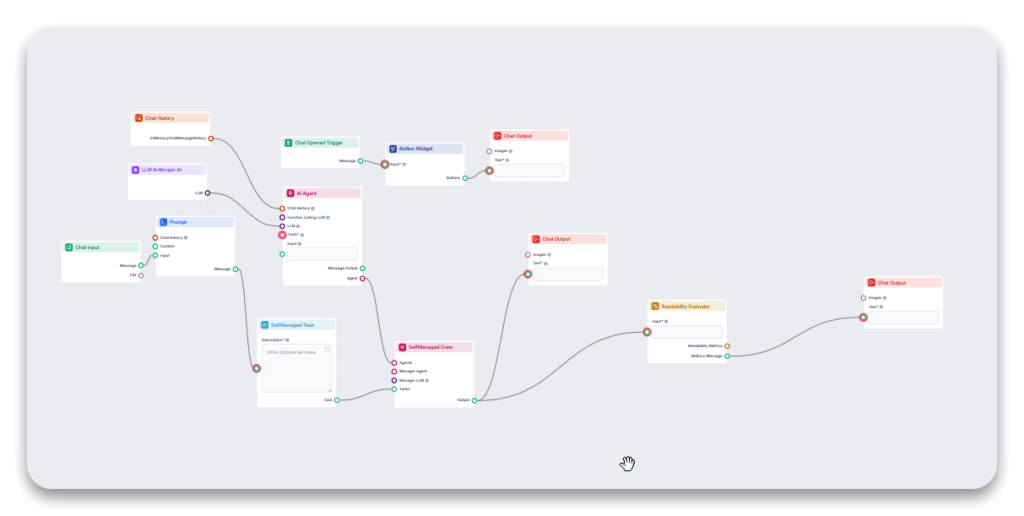Claude 3.7 Sonnet Performance Analysis: Exploring Capabilities Across Tasks
As Claude 3.7 Sonnet establishes itself in the AI landscape, understanding its performance across different types of tasks becomes increasingly valuable for developers, researchers, and end users. This analysis examines Claude 3.7’s capabilities across five key areas: content generation, mathematical calculation, summarization, comparative analysis, and creative writing.
Content Generation: Depth with Structure
When tasked with creating comprehensive content about project management fundamentals, Claude 3.7 demonstrated powerful research and synthesis capabilities:
The model methodically gathered information through a multi-step approach:
- Beginning with broad searches on project management fundamentals
- Refining searches to focus specifically on objectives, scope, and delegation
- Utilizing URL crawling to extract detailed information from reliable sources

The resulting article showcased Claude 3.7’s ability to create well-structured, in-depth content with clear organization:
- Logical headings and subheadings (Introduction, Defining Project Objectives, Project Scope Management, etc.)
- Detailed explanations of frameworks (like SMART objectives)
- Sophisticated discussion of integration between concepts
- Professional tone appropriate for educational content
Processing time for this comprehensive task was approximately 3 minutes and 44 seconds, resulting in an 1,813-word article with college-level reading complexity (Flesch-Kincaid Grade Level: 13). This demonstrates Claude 3.7’s ability to handle complex content tasks that require significant research and organization.
Mathematical Calculation: Precision with Business Context
Claude 3.7 excelled at a multi-part business calculation problem involving product pricing, costs, and revenue projections:
The model:
- Accurately calculated total revenue ($11,600) and profit ($4,800) from given parameters
- Presented multiple strategic approaches to achieve a 10% revenue increase:
- Increasing only Product A sales (24 additional units)
- Increasing only Product B sales (17 additional units)
- Proportionally increasing both products (12 units of A and 8 units of B)
What’s notable is Claude 3.7’s business intelligence in providing multiple solutions rather than a single answer, demonstrating contextual understanding beyond pure calculation. The model recognized that business problems often have multiple valid approaches and provided appropriate rounding for real-world application.
This task was completed in just 22 seconds, highlighting Claude 3.7’s efficiency with mathematical reasoning and problem-solving.
Summarization: Efficient Information Distillation
When asked to create a 100-word summary of an article on AI reasoning, Claude 3.7 demonstrated exceptional information processing and distillation:
- Rapidly identified the most significant themes and concepts in the source material
- Created an 89-word summary that captured key topics (AI reasoning types, applications in healthcare, recent advancements like OpenAI’s o1 model)
- Maintained proper context while drastically reducing content volume
- Adhered precisely to the length constraint
The model completed this task in approximately 5 seconds, showcasing its ability to quickly process information and extract the most salient points – a valuable capability for research assistance, content curation, and information management applications.

Comparative Analysis: Balanced Research-Based Assessment
In comparing electric vehicles with hydrogen-powered cars, Claude 3.7 demonstrated sophisticated research and analytical capabilities:
The model:
- Used search tools to gather current, relevant information on both technologies
- Organized the comparison logically around requested factors (energy production, vehicle lifecycle, emissions)
- Provided balanced perspectives on both technologies without oversimplification
- Acknowledged contextual factors affecting environmental impact (energy sources, regional differences)
The resulting 682-word analysis was nuanced and avoided simplistic conclusions, recognizing the complex dependencies in assessing environmental impact. The model correctly identified that “environmental superiority depends on factors like energy sources, application, and regional context.”
Processing time was approximately 2 minutes and 56 seconds, reflecting the depth of research and complexity of the analysis performed.
Creative Writing: Imaginative Yet Grounded Storytelling
When tasked with creative writing about a future world of electric vehicles, Claude 3.7 produced a cohesive 482-word narrative that balanced imagination with logical extrapolation:
The story effectively:
- Created an evocative future setting (the year 2085)
- Described tangible environmental changes (cleaner air, reduced respiratory illness)
- Imagined urban transformation (pedestrian plazas, repurposed gas stations)
- Addressed realistic infrastructure evolution (charging networks, vehicle-to-grid systems)
- Considered economic shifts (decline of oil, rise of battery economy)
- Acknowledged transition challenges (rare earth materials, equitable access)
The model completed this task in 43 seconds, demonstrating efficient creative generation while maintaining internal consistency and addressing all requested elements.

Key Insights on Claude 3.7’s Capabilities
This analysis reveals several important characteristics of Claude 3.7’s performance:
- Variable processing times for different cognitive tasks:
- Simple calculations and summarization: 5-22 seconds
- Creative writing: ~40 seconds
- Research-intensive comparative analysis: ~3 minutes
- Comprehensive content generation: ~3-4 minutes
- Adaptability across formats and domains:
- Structured professional content
- Mathematical problem-solving
- Information distillation
- Analytical comparison
- Creative narrative
- Contextual intelligence beyond direct instruction:
- Providing multiple solutions to business problems
- Balancing optimism with realism in future scenarios
- Acknowledging complexity in comparative analyses
- Effective information gathering and synthesis:
- Multi-step research approach
- Source evaluation
- Integration of information from multiple sources
- Strong output structure and organization:
- Logical headings and progression
- Appropriate depth for context
- Clear transitions between ideas
Applications and Implications
Claude 3.7’s performance across these diverse tasks suggests particular strength in applications requiring:
- Research-based content creation
- Analytical comparison of complex topics
- Mathematical problem-solving with business context
- Information distillation and summarization
- Creative content with logical constraints
The model’s ability to balance depth with efficiency makes it particularly suited for knowledge work that requires both research and synthesis. The consistent quality across task types suggests Claude 3.7 can serve as a flexible cognitive assistant across multiple domains rather than excelling only in narrow applications.
From a development perspective, the variation in processing times reflects the different cognitive loads of various tasks, with information-gathering and synthesis requiring significantly more processing than direct calculation or creative generation.
As we continue to evaluate large language models like Claude 3.7, this type of cross-task analysis provides valuable insights into both capabilities and limitations, helping users and developers better understand how to effectively leverage these AI systems for complex cognitive work.
